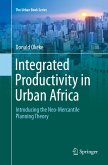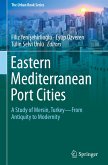This book offers unique insights into modern African architecture, influenced by modern European architecture, and at the same time a natural successor to existing site-specific and traditional architecture. It brings together the worlds of traditional site-specific architecture with the Modernist Project in Africa, which to date have only been considered in isolation.
The book covers the four architectural disciplines: urban planning, building technology, building physics, and conservation. It includes an introduction with a historical outline and an analysis and comparison of a number of projects in various countries in Africa. On the basis of examples drawn from practice, the author documents and describes the hybrid architectural forms that have emerged from the confrontation and fusion with (pre)modern Western architecture and urban planning, and in so doing he also narrates the history of African architecture.
The book covers the four architectural disciplines: urban planning, building technology, building physics, and conservation. It includes an introduction with a historical outline and an analysis and comparison of a number of projects in various countries in Africa. On the basis of examples drawn from practice, the author documents and describes the hybrid architectural forms that have emerged from the confrontation and fusion with (pre)modern Western architecture and urban planning, and in so doing he also narrates the history of African architecture.








